If you’re a plant lover, you probably already know the unique charm of a prayer plant. Known for its beautifully patterned leaves and fascinating habit of folding its foliage upwards at night — as if in prayer — the prayer plant (Maranta leuconeura) is a favorite in many homes. But what makes this stunning houseplant even more delightful is how easily it can be propagated, allowing you to expand your indoor jungle, rejuvenate a mature plant, or share a piece of greenery with friends and family.
In this complete guide, we’ll show you everything you need to know about how to propagate a prayer plant, covering different methods, essential supplies, expert tips, and aftercare. Whether you’re new to propagation or already have a few cuttings rooting on your windowsill, this guide is here to help you multiply your greenery with ease.
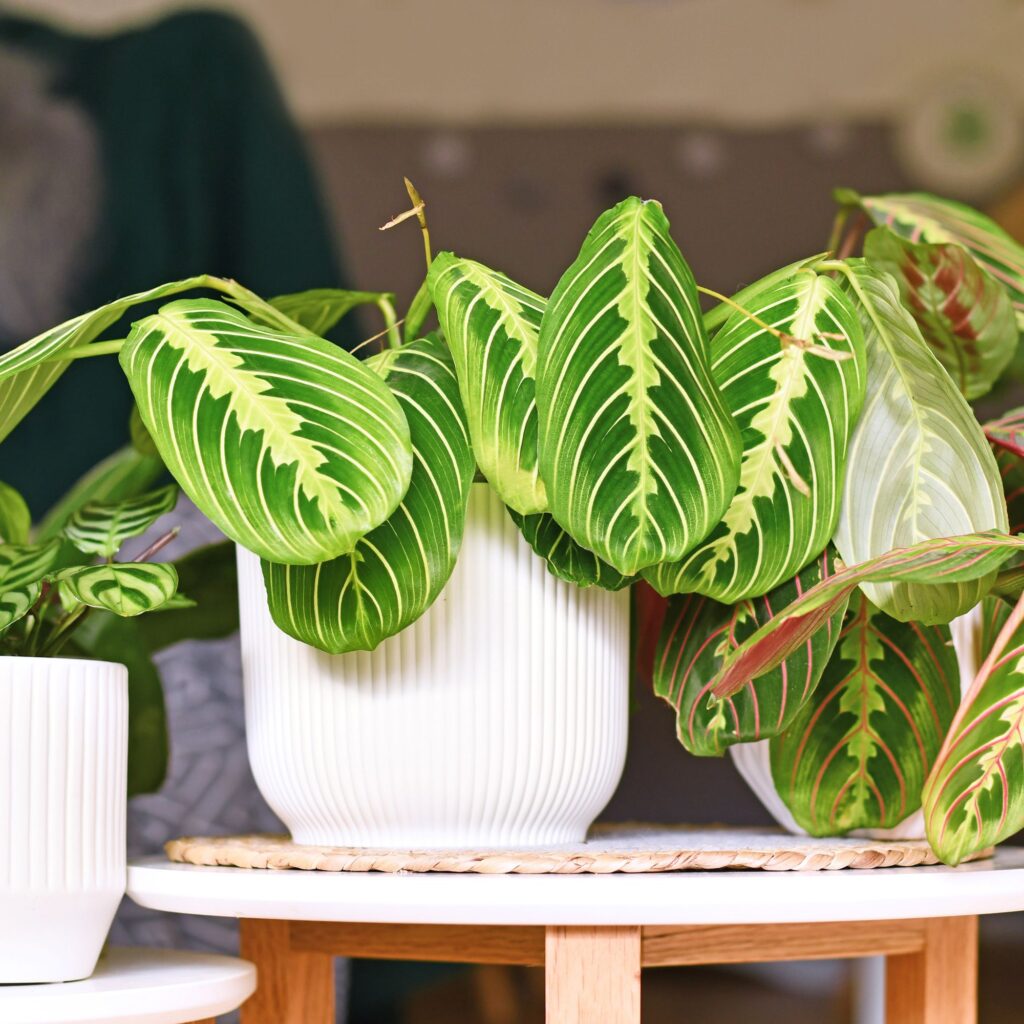
Why Propagate a Prayer Plant?
Propagation isn’t just about saving money on new plants — it’s a gratifying process that deepens your connection with nature. Here’s why you should consider propagating your prayer plant:
- Expand your indoor plant collection without spending a dime.
- Rejuvenate an overgrown or leggy plant by trimming and regrowing.
- Create thoughtful, living gifts for family and friends.
- Experiment and learn new plant care skills.
- Add lush greenery to different rooms with your very own propagated cuttings.
The prayer plant is especially suitable for propagation because of its forgiving nature, attractive foliage, and fast rooting tendencies.
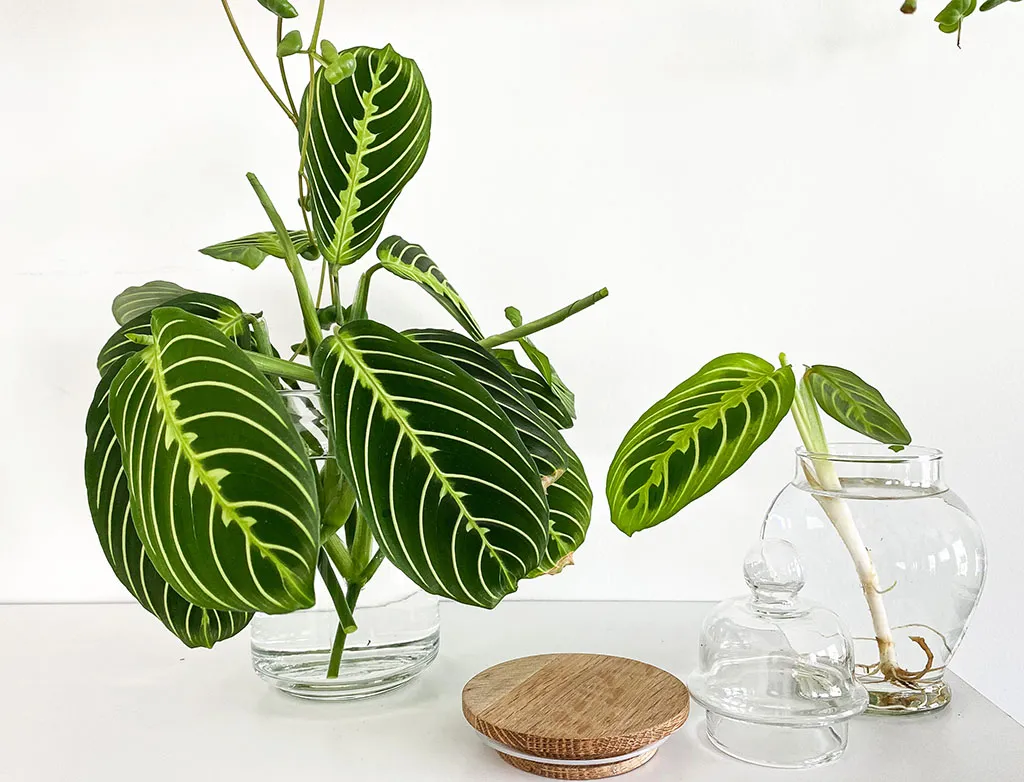
The Best Ways to Propagate a Prayer Plant
There are two main methods to propagate a prayer plant:
- Stem Cuttings (in water or soil)
- Root Division
Both are beginner-friendly and effective. Let’s dive into the details of each method.
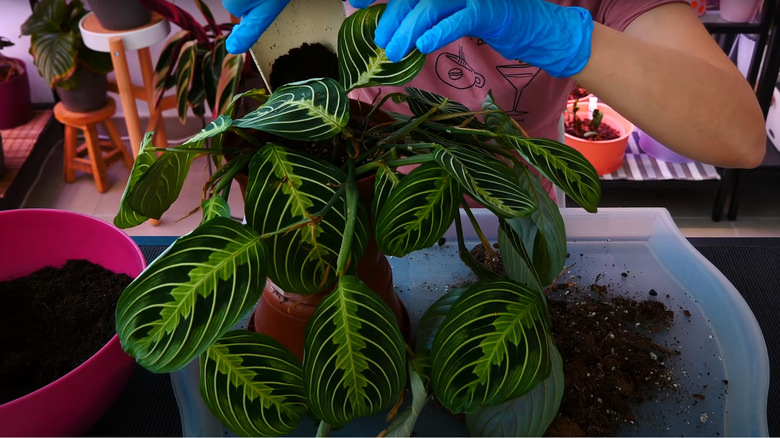
What You’ll Need
Before you start, gather these basic propagation supplies:
- A healthy, mature prayer plant
- Sharp, sterilized scissors or pruning shears
- Small pots or containers
- Well-draining potting mix (a peat-based mix with perlite is ideal)
- A clean glass or jar for water propagation
- Filtered or distilled water
- A bright, warm location with indirect light
- Optional: Rooting hormone powder
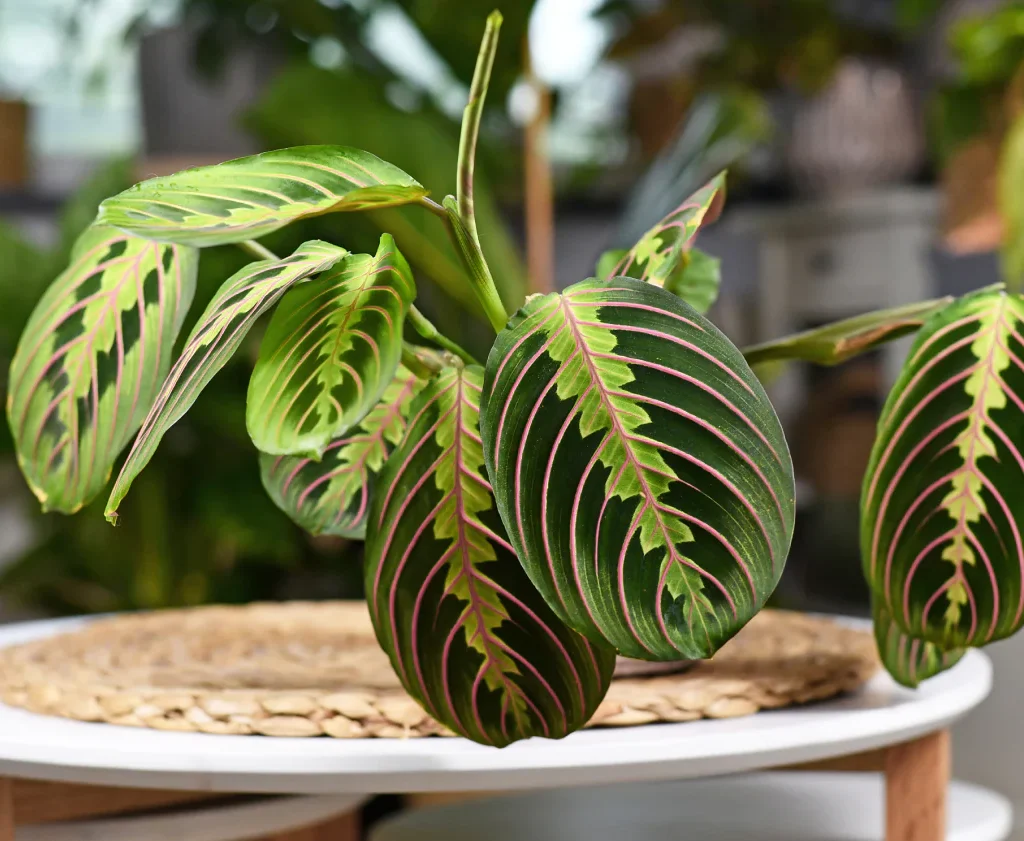
Method 1: Propagating Prayer Plant from Stem Cuttings
This is the most popular and visually satisfying propagation method, as you can watch roots forming in water before planting them in soil.
Step-by-Step Guide:
1. Choose a Healthy Stem
Select a healthy, vigorous stem with at least one or two leaves and a visible node. A node is the small bump where roots will grow — typically found just below a leaf.
2. Cut the Stem Cleanly
Using sharp, sterilized scissors or shears, make a clean cut just below the node. Ensure your cuttings are at least 3-5 inches long for the best chance of success.
3. Prepare the Cutting
If your cutting has several leaves, you can remove the lower ones near the node, leaving a couple of healthy leaves at the top. This reduces the cutting’s energy demand and focuses growth on root development.
4. Rooting in Water
- Fill a glass jar or vase with filtered or distilled water (tap water with chlorine can hinder root growth).
- Place the cutting into the jar so that the node is submerged.
- Set the jar in a warm location with bright, indirect sunlight.
- Change the water every 2–3 days to keep it fresh and clear.
Root growth should begin within 2–3 weeks, with roots becoming strong enough to plant in soil after about 4–6 weeks.
5. Transplanting into Soil
Once the roots are around 2 inches long, plant your cutting into a small pot filled with well-draining, peat-rich potting mix. Water gently and continue to keep the plant in indirect light.
Method 2: Propagating Prayer Plant by Division
This method is perfect if your prayer plant has grown too large for its pot or has multiple stems and root systems.
Step-by-Step Guide:
1. Remove the Plant from Its Pot
Carefully take your mature prayer plant out of its container. Loosen the soil gently to expose the root system.
2. Divide the Root Ball
Look for natural separations in the plant where you can pull apart or cut sections, ensuring each division has a healthy cluster of roots and a few leaves attached.
3. Replant the Divisions
Plant each section in a separate pot with fresh, well-draining potting mix. Water lightly to settle the soil and roots.
4. Provide Proper Care
Place the new plants in bright, indirect light and maintain slightly moist soil. New growth typically appears within 2–4 weeks as the divisions adjust to their new homes.
Aftercare for New Prayer Plant Cuttings
Proper care after propagation is essential for helping your cuttings or divisions thrive. Here’s what your new plants will need:
Light
Prayer plants prefer bright, indirect sunlight. Avoid direct sun, as it can scorch delicate leaves.
Water
Keep the soil lightly moist but never soggy. Allow the top inch of soil to dry before watering again.
Humidity
As tropical plants, prayer plants love high humidity. Boost humidity with a pebble tray, humidifier, or by misting the leaves regularly.
Temperature
Maintain a consistent temperature of 65°F–80°F (18°C–27°C). Avoid placing plants near cold drafts or heating vents.
Fertilizer
Once your new plants are established (after 1–2 months), you can feed them monthly with a balanced, diluted houseplant fertilizer during the growing season (spring and summer).
Common Mistakes to Avoid
To ensure successful propagation, steer clear of these common pitfalls:
- Using dull or dirty tools: Always sterilize scissors to prevent disease.
- Skipping the node: No node means no roots for your stem cutting.
- Overwatering cuttings: Whether in soil or water, too much moisture leads to rot.
- Placing in direct sun: Bright, indirect light is key for healthy root and foliage development.
- Ignoring humidity needs: Low humidity can cause leaves to curl and brown at the edges.
Fun Display Ideas for Your Propagated Prayer Plants
Once your new prayer plants are rooted and growing, get creative with how you display them:
- Cluster them in stylish ceramic pots on a windowsill or side table.
- Hang cuttings in transparent glass vases to showcase their roots before planting.
- Create a mini prayer plant jungle by grouping several pots together for an eye-catching display.
- Gift propagated plants in decorative containers for a heartfelt, green present.
Conclusion
Propagating a prayer plant is one of the most rewarding ways to deepen your plant-parent skills and share the calming joy of greenery. Whether you choose the simplicity of water propagation or the efficiency of root division, you’ll soon have vibrant new plants ready to brighten up your home — or someone else’s.
With their beautiful, patterned leaves and fascinating nightly movements, prayer plants are a perfect symbol of growth and grace. So why not multiply the magic? Grab your scissors, pick your healthiest stem, and start propagating today — because there’s always room for a little more green in your life.

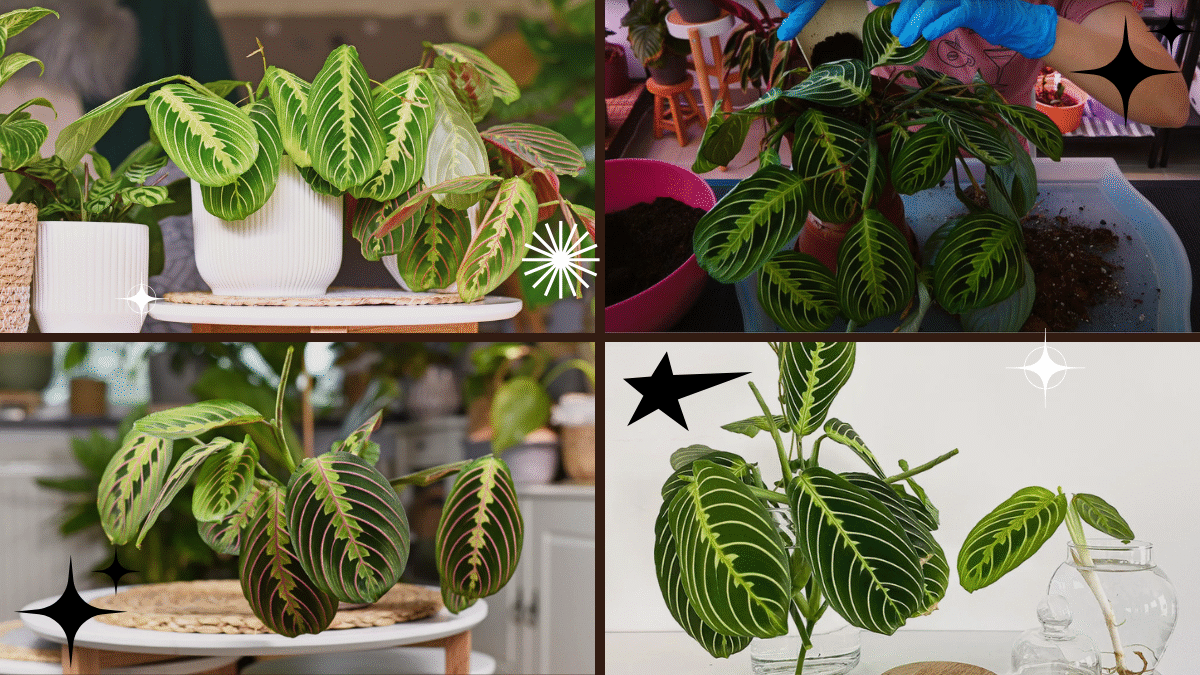



Leave A Comment